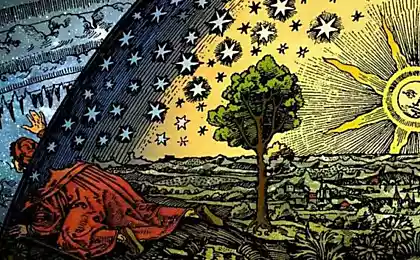568
The "@" appeared a few hundred years ago, in medieval monasteries

familiar to all users of the Internet "@" symbol appeared several hundred years ago, in medieval monasteries. It was used to refer to the Latin preposition «ad» (in modern English - «at»), although some researchers have argued that the "dog" came up with the Italian monks.
Whatever it was, this innovation was soon adopted dealers: one of the first to use the symbol outside the monastery, was a Florentine merchant Francesco Lapi, in one of his letters labeled "dog" amphora - a standard in those days, a measure of volume, approximately equal to 26 ti l.
Gradually the sign began to acquire other values, for example, Portuguese, French and Spanish to the "@" symbol is usually cut old Spanish measure of weight under the name «arroba», equal to 11 502 kg. Symbol, like "dog", the researchers found in the Russian books of XVI-XVII centuries, including - of Law of Ivan the Terrible, dating from 1550, the year, and to the XIX-th century mark is already widespread as a designation unit price. < br />

In 1963 there was a coding standard ASCII, including 95-year-printed signs that attended and "dog", and in 1973 members of the organization «Internet Engineering Taskforce» consolidated the use of the mark in the division name and domain - this idea in 1971 th year advanced programmer Ray Tomlinson. Mass "dog" was in 1996, when there was service «Hotmail».
By the way, "dog" is called a symbol of the Russian and Ukrainian, in other languages of the mark is known by others, sometimes quite unusual names. Italians say «chiocciola» («snail»), in Greece he was known as «παπακι» - «duck" in the Czech Republic and Slovakia - «zavináč» («roll herring"), Taiwan use the term «小 老鼠» ( pronounced as "xiao lao shu") - "mouse", Israel extended the name «שטרודל» - «strudel" and Kazakhstan sign called "ayқұlaқ" - "the ear of the Moon».
via factroom.ru
The computer is able to read the text directly from the human brain
To avoid nightmares, do not eat at night spicy and sweet























